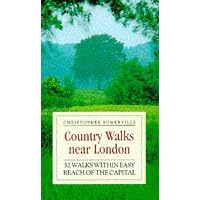 It's Sunday afternoon and I've made camp on the turquoise coloured futon sofa, which I'm rather fond of, in the sitting room. It can get a bit uncomfortable after a while since it's not exactly comfy - it has been described by one of our friends as the Japanese torture bed - but anyway here I am sniffing away with an autumnal cold.
It's Sunday afternoon and I've made camp on the turquoise coloured futon sofa, which I'm rather fond of, in the sitting room. It can get a bit uncomfortable after a while since it's not exactly comfy - it has been described by one of our friends as the Japanese torture bed - but anyway here I am sniffing away with an autumnal cold.There have been complaints over here in the UK about our summer because earlier in the year the Met Office rashly promised us a barbecue summer. The implication being that we would be enjoying a succession of hot summer days and we would be assailed with the smells of lighter fuel, burning charcoal and cremated sausages all summer long. Needless to say this didn't happen but we did have some spells of beautiful English weather and one of those times was when we went on holiday to Norfolk in late August.
We stayed in a tiny self-catering cottage on a working farm in Wymondham where the only sounds we could hear was birdsong, and at night it was so dark you couldn't see to the end of the driveway but the stars and planets above were clearly visible. We aimed to explore as much as we could of Norfolk in one week which was a bit ambitious and I aimed to do a drawing a day and almost managed it.
The sketch above was made from the Berney Arms Pub which claims to be the most remote pub in the county. We arrived there on foot having travelled by train which dropped us off at the smallest station platform I've ever seen and we had to request the train to stop, like a bus. I found that very amusing and it's the first time in my life I've spoken to the driver of the train I've been on. While we drove around Norfolk in the car we often saw massive wind turbines creating electricity. They look futuristic and very
 imposing but when we were walking around Norfolk we frequently came across the remains of old-fashioned windmills that drove water, or ground wheat. The one I have sketched above isn't a working windmill any more but it is complete and serves as a reminder of how hard people used to labour to get anything done.
imposing but when we were walking around Norfolk we frequently came across the remains of old-fashioned windmills that drove water, or ground wheat. The one I have sketched above isn't a working windmill any more but it is complete and serves as a reminder of how hard people used to labour to get anything done.We decided early in the week that driving around Norfolk was a waste of time so we stuck to train trips for the rest of our stay. This meant we spent quite a lot of time during the week waiting at Wymondham Station for trains to Norwich so that gave me a chance to commit a sketch to paper. The station has retained its 1950's/60's characteristics to appeal to the tourists and is something like a memory from my childhood. It even has a Brief Encounters style restaurant but we didn't try it in case the food tasted like something from the 1940's!
The one day we needed to use the car was the day we did a circular walk which more-or-less began and ended at
 Wiveton. It had taken us so long to get to the start of our walk we decided to start with lunch and so sat outside at the Wiveton Bell where I had a good view of St Mary's Church and was able to knock off this sketch while we waited for our food. I can't remember what fish was on the menu but I do know that it was the first time I have ever eaten Samphire. It is pronouced samfer and grows on coastal, tidal and salt marshes around the North Norfolk coast. I believe it is also known as Poor Man's Asparagus and I remember seeing it growing wild when we were on our walks.
Wiveton. It had taken us so long to get to the start of our walk we decided to start with lunch and so sat outside at the Wiveton Bell where I had a good view of St Mary's Church and was able to knock off this sketch while we waited for our food. I can't remember what fish was on the menu but I do know that it was the first time I have ever eaten Samphire. It is pronouced samfer and grows on coastal, tidal and salt marshes around the North Norfolk coast. I believe it is also known as Poor Man's Asparagus and I remember seeing it growing wild when we were on our walks.So that's my blogging postcard from my summer holiday and I've enjoyed remembering our week getting back to nature.








